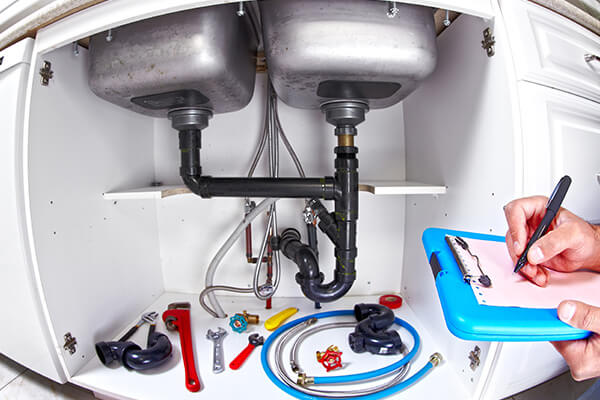Residential plumbing is usually the most complex part of remodeling kitchens and bathrooms. Plumbing must follow building codes and guidelines to avert disaster and health risks. When working on a project, homeowners should obtain information on the local building codes from the local building department. An inspector must approve the plans and the entire project. Therefore, create a detailed plan, including a list of every material used.
Guidelines for residential plumbing
Before beginning a project, review the necessary plumbing standards. Take note of the following guidelines when working on residential plumbing:
Pay attention to drainpipe slopes
Guidelines state that drainpipes should slope at a minimum of one-fourth inch per running foot. If a room does not have a basement or crawl space, a meticulous calculation may be necessary before running the drain across the room. Some codes may state that vent pipes slope at a one-eighth inch per foot; others may accommodate level vents.
Use purple primer
When joining PVC pipes, use a purple primer to allow the inspector to easily detect that the pipes are primed. Failure to glue the pipes without a primer will eventually cause leakage.
Get the correct fittings
Accurately list fittings on the plumbing plan to ensure the correct fittings are purchased and used. Use special drain fittings, such as a closet bend, to enable the smooth flow of wastewater. Inspectors also have certain fitting requirements for various fixtures.
Install cleanouts
The guideline requires cleanouts at different points to ensure drains can be quickly drilled if a clog occurs. For safety, fit a cleanout at every inlet to the drain line unless there is another one close by.
Do not cut notches in joists
Cutting notches in joists diminishes its strength. Therefore, boreholes through joists when feasible. This is a cautious process since the holes for a drainpipe should be a slightly different height to slope the pipe. Doubled joints may be necessary for long notched or bored spans.
Examine leaks
After assembling the drain lines, an inspector will run a test to ensure there is no leakage. This process may mean pouring water through the pipes or plugging the line with an inflatable drain plug and filling the system with water.
Mount an access panel
Fixture controls, valves, compression pipe fittings, and cleanouts must not be covered by the floor or wall in case maintenance or repair is required in the future. If necessary, mount an access panel, usually behind a tub or shower.
Use proper transition fitting
Utilize correct transition fittings when changing pipe materials. Failure to use a dielectric union could cause the joint between galvanized and copper pipes to corrode. Always use the approved fitting when changing from cast iron to plastic, plastic to copper, and ABS to PVC.
Change old plumbing
Any new plumbing installed must meet the guidelines although old plumbing can stay. However, if old galvanized pipes and gate valves are causing low water pressure, they must be replaced to supply enough pressure to the new pipes.
Final note
Installing residential plumbing should not compromise the structure of the building. Ensure you follow all the required guidelines or hire a professional plumber who is familiar with all the plumbing requirements and codes.
Request an appointment here: https://www.bevillstexas.com or call Bevills Plumbing, Heating & Air Conditioning at (325) 225-4115for an appointment in our Abilene office.


